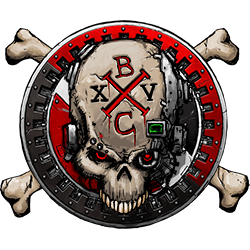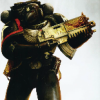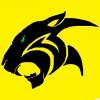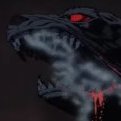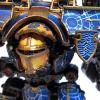-
Posts
1901 -
Joined
-
Last visited
-
Days Won
4
Arkhanist last won the day on June 6 2023
Arkhanist had the most liked content!
About Arkhanist

Profile Information
-
Location
Sunny Dorset, UK
-
Faction
Blood Angels
Recent Profile Visitors
-
 crimsondave reacted to a post in a topic:
Any suggestions for bulk-shading terrain and/or alternatives to Agrax Earthshade?
crimsondave reacted to a post in a topic:
Any suggestions for bulk-shading terrain and/or alternatives to Agrax Earthshade?
-
 brother Vorn_GarDos reacted to a post in a topic:
AdMech PowerWash Simulator
brother Vorn_GarDos reacted to a post in a topic:
AdMech PowerWash Simulator
-
 ZeroWolf reacted to a post in a topic:
AdMech PowerWash Simulator
ZeroWolf reacted to a post in a topic:
AdMech PowerWash Simulator
-
 N1SB reacted to a post in a topic:
AdMech PowerWash Simulator
N1SB reacted to a post in a topic:
AdMech PowerWash Simulator
-
 vadersson reacted to a post in a topic:
AdMech PowerWash Simulator
vadersson reacted to a post in a topic:
AdMech PowerWash Simulator
-

Licensed Computer Games AdMech PowerWash Simulator
Arkhanist replied to N1SB's topic in + NEWS, RUMORS, AND BOARD ANNOUNCEMENTS +
For those unfamiliar, powerwash simulator is a game where you use a water pressure washer to wash dirt off various filthy things in sections; buildings, a wide variety of vehicles, fairground rides etc with different nozzles (power vs spray width), one scene at a time. It's not exactly AAA graphics, but it's relaxing and meditative - much more fun than real cleaning! My moderate gaming PC happily runs it at 100+ FPS. They've done various themed DLC (some paid, some free) addons to the main game, and this is now the 40K one, if you fancy cleaning the mud and blood off a land raider etc. -
 Arkhanist reacted to a post in a topic:
Updated 40k Codex Release schedule
Arkhanist reacted to a post in a topic:
Updated 40k Codex Release schedule
-
 Arkhanist reacted to a post in a topic:
Astartes MKVI Assault Marines
Arkhanist reacted to a post in a topic:
Astartes MKVI Assault Marines
-
 Arkhanist reacted to a post in a topic:
17th November preview event
Arkhanist reacted to a post in a topic:
17th November preview event
-
 Arkhanist reacted to a post in a topic:
17th November preview event
Arkhanist reacted to a post in a topic:
17th November preview event
-
 Arkhanist reacted to a post in a topic:
40k Battleforces rumours
Arkhanist reacted to a post in a topic:
40k Battleforces rumours
-
 Arkhanist reacted to a post in a topic:
40k Battleforces rumours
Arkhanist reacted to a post in a topic:
40k Battleforces rumours
-
 Arkhanist reacted to a post in a topic:
40k Battleforces rumours
Arkhanist reacted to a post in a topic:
40k Battleforces rumours
-
 Arkhanist reacted to a post in a topic:
40k Battleforces rumours
Arkhanist reacted to a post in a topic:
40k Battleforces rumours
-
Just another thumbs up for a vortex mixer here; getting old and creaky sucks, but mixing paint is trivial with a mixer. I've GW metallics that have *never* been fully mixed until I vortex'd em. Adding a paint-safe mixer ball of some sort will speed things up for tricky (contrast) or thick paints. I posted these over 2 years ago, and it's working just as well as it was then. before: after ~15 seconds on mixer: The four E's mixer is one a lot of people have as it was almost the only option in that size for a good while, but it's basically science lab equipment hence the price. The much cheaper alternative ones should be fine too, as long as they're similar e.g. about 5000 RPM; the build quality may be lower, but the 4E is built like a tank which is probably overkill given we're not using the thing for hours a day. As always, if your paint has dried out a bit and is too thick to easily mix, adding in a few drops of medium, e.g. contrast medium or lahmian medium (plus a mixer ball) will help it to liquify and mix much more easily, without affecting coverage as thinning the pot with just water can. I tend to do it from the get go with base paint thickness equivalents.
-
With the very high humidity lately due to the rain, I'm not surprised the army painter spray went badly - one of the main reasons I switched to airbrushing myself! Matt or satin varnish over frosting will do basically nothing as you've discovered. Frosting is caused by an excessively rough surface; usually the matting agent clumps up due to not being shaken enough, sprayed from too far away and it dries mid-air (with AP sprays you do want to be pretty close and fast, light coat passes), or, most likely in this case, high humidity caused it to clump mid-air. The goal is to fill in around the excessively rough surface to get a smooth, glossy one again, so you can then start-over to get the final finish you want. This is the idea behind olive oil, it acts as a gloss oil finish, though obviously not the durability of varnish! I find gloss varnish more effective. I'd double down on the vallejo gloss by hairy stick you've already done. 'ardcoat is okish, but it's not a very glossy varnish, so not ideal for this and you'd need a bunch of layers. Apply the vallejo gloss in thin layers and let fully dry each time (several hours min), on each area that is still frosted - may take several if the frosting is particularly bad. Once the frosting is all gone (or as much as you can) and you've got a full glossy dried mini, you can then do a thin layer or two of matt or satin to get the final look, hopefully without frosting this time! For this final finish coat, either get the airbrush out and do it properly :) or a thin coat of the same vallejo matt by hairy stick will also work, just slower. I'd avoid the rattlecans until the weather improves, and humidity in particular is much lower.
-
Whatever nice organisation scheme I ever end up arranging my paints into, it usually descends into near madness in short order... I've one rack of Contrast, one rack of pro-acryl (they've effectively replaced citadel base paints for me), one rack of citadel layers, one rack of air paints in droppers, and one rack of miscellanous in droppers. I then have a toolbox which holds my non-standard bottles; vallejo metal color, inks, flory clay weathering washes etc. Certain key paints like white, black and mediums never leave my painting tray. I also have a big box of rarely used paints stored elsewhere; I find it *really* hard to throw old paints away. I need to purge some more from my miscellaneous rack (like my army painter paints that I hardly ever use) into there so I can decant a bunch of layer paints into droppers! Organising by colour kinda works, but I don't get too picky about it as I tend to accumulate paints from my current project in a huddle on my desk. Organising alphabetically breaks as soon as you buy a new paint and realise you have to shuffle half a rack over to accomodate it.
-

Legions Imperialis Legions Imperialis
Arkhanist replied to Matrindur's topic in + NEWS, RUMORS, AND BOARD ANNOUNCEMENTS +
Most previous versions of epic included xenos because they weren't set in the Heresy. Even the 1st version which was, included orks and eldar via WD. There was no immutable law that forced GW to make the new epic set in the Heresy era, rather than 40k - AI wasn't. On the other hand, we'd probably be getting all the complaints about Primaris in epic instead... -

Legions Imperialis Legions Imperialis
Arkhanist replied to Matrindur's topic in + NEWS, RUMORS, AND BOARD ANNOUNCEMENTS +
And personally I'd very much like to see xenos armies come in quickly, just like the original Codex Titanicus and space marine 2nd edition did, rather than GW just release the exact same marine units over and over in 4 different tiny armour marks in yet another marine sausage fest. But I suspect I'm going to be even more disappointed; but for the same reason, the high cost of the creation of plastic sprue moulds, for a niche game, when the opportunity cost is churning out some more 40k minis that print money. -

Legions Imperialis Legions Imperialis
Arkhanist replied to Matrindur's topic in + NEWS, RUMORS, AND BOARD ANNOUNCEMENTS +
When they made Adeptus Titanicus, the very first epic scale game in 1988, they needed to cut down on the types of sprue in the box. So they needed a reason for identical imperial titans to be fighting each other. And thus they created a little blurb about something they dubbed the Horus Heresy in M30 to explain it... They did release some rules for tanks and space marine infantry to use in this original AT in White Dwarf, and little epic scale metal minis to represent them. This was soon followed by Space Marine 1st edition (1989) "Epic Battles in the Age of Heresy", a boxed game of the same design of marines and tanks, but now in mass-produced plastic, which could also include titans from Adeptus Titanicus. Those marines were in mark VI, same as the metal ones, because that was the armour for space marines back then. (thanks to RTB01), and thus the game of epic battles was born... These little fellas with their cute little beakie helmets. So mark VI was canonically the official mark of the Heresy, from the very beginning. Obviously they added older marks to the lore over time, and people of course have their favourite ones they'd like to see. Like the others, making Mark V the mishmash 'heresy' armour for armies when supply lines were shattered, and pre-heresy supplies had run short, and before mark VI had become widespread is a later addition. -

Legions Imperialis Legions Imperialis
Arkhanist replied to Matrindur's topic in + NEWS, RUMORS, AND BOARD ANNOUNCEMENTS +
Imperial Fist is one of the new 'contrast' paints that's not actually contrast-like at all. There's several that are single-tone colours, that don't darken in the recesses or go on blotchy on flat surfaces. They're more like an intense, easy to apply base coat (when used over white). They really should have called them something different in my opinion, as they're something else. Bad Moon Yellow, Magmadroth Flame, Baal Red, Doomfire Magenta and Imperial Fist especially, and Ironjawz Yellow, Leviathan Purple and Black Legion are also somewhat in that vein. The older Iyanden yellow is in the bottom left, and you can see the coffee staining that makes it less suitable for larger plates e.g. tanks. Plain bad moon yellow and imperial fist at the top, on the other hand... It's the closest to doing an airbrush coat I've found via brush - I don't know what chemistry they're using, but it's goddamn clever. -

Legions Imperialis Legions Imperialis
Arkhanist replied to Matrindur's topic in + NEWS, RUMORS, AND BOARD ANNOUNCEMENTS +
I had a quick look at Carrefour and Intermarché (french hypermarkets) and could only see metric tape measures. But they're trivial to find on amazon.fr, and dual metric-inch (le pouce) tape measures certainly exist generally, as there's one at the house of my French mother-in-law for imperial sewing patterns, from a craft store. I'm sure they'd be easy to find at a big hardware or craft store. And France is about as metric-centric as they come - given they invented it! - but they still have to deal with US (and to some extent, the UK) imports still using imperial measurements, even though their own have long since passed into obscurity. -

How prevalent is 3D printing? And is it affecting the hobby?
Arkhanist replied to Brother Tyler's topic in + AMICUS AEDES +
This has already been somewhat developed - 40k is not the only target market for 3d printing by any means. Generally you get patreons who do exactly as you describe; they design new models each month along a theme. Some are for D&D expansions, some for armies compatible with existing games like 40k/fantasy/onepagerules, or a whole team for say bloodbowl, while some just for making very intricate standalone minis that people mostly get cos they're cool. The cost of subscription varies, but is often around £10 a month; early subscribers get it cheaper. For those who miss out on a given month, the models/units within it then usually go up on one or more of the STL marketplaces; C&G, MMF, cults3d etc. The individual units/models tend to be significantly more expensive depending upon artist and complexity; £10 - £20 is about as much as a single unit goes for, but combo releases for the whole month can be £40-£50. Heroes infinite go for the very high ~£150 per month you miss! So you're heavily encouraged to subscribe to the patreon of designers you like, because the price is FAR cheaper. But of course, you only tend to know what's in the preview for the month ahead. But recurring revenue is considerably more useful than one-off purchases. The other big method for 'one off' projects tend to be kickstarter; e.g. a whole bunch of terrain or base designs, with buy-in later being higher than at the time. If you're a commercial printer who wants to sell the models, as opposed to for personal use, then usually you need to sign up for a merchant licence on that patreon/kickstarter, which is considerably higher; anything from £50 to £100 a month for patreon. But then, apart from marking where you got them from, you can generally print and sell as many as you like on your own store. Printing costs vary; once you've bought a resin printer (around £200-£400 unless you're going REALLY big or fancy), it's about 10 to 20p a figure for electricity & resin & wastage. So if you're wanting to print a fair bit, and have the space and time to learn, then it's cheaper to buy your own printer and subscribe to a patreon or two, and you will have a steady supply of new minis to fit your interests. If you want to pay someone else to print your specific STLs, then you're still generally buying those STLs yourself, on a mostly indvidual basis (obviously sharing between friends is generally fine). If you're buying off-the-shelf prints from e.g. etsy, then that printer paid the merchant price, or is otherwise licenced by the designer. So the designer is getting compensated, printing yourself is fairly cheap (past the initial investment), but you can also get a wide range of one-off bits from specialist sellers if you're not too invested. Overall, it seems to work quite well! Obviously there's a HUGE amount of free STLs made by people who just like to share; these can vary in quality, but there's plenty there if you're on a tight budget and are primarily after bits. But the best quality 3rd party full model designs do tend to be charged for, one way or another. -

Legions Imperialis Legions Imperialis
Arkhanist replied to Matrindur's topic in + NEWS, RUMORS, AND BOARD ANNOUNCEMENTS +
IIRC, Mars' did have an artifically generated oxygen-rich atmosphere and surface water during the Dark Age of Technology, but it was destroyed during the warfare of the Age of Strife, and the planet reverted to its very thin, dry primordial state - plus a bunch of radiation and chemical weapon pollution. With a very thin (and dangerous) atmosphere, large powered aircraft become quite difficult as you get very little lift - you're more building spacecraft instead, which requires a higher tech base. So during the latter age of strife (which did last ~5000 years!), when Titans were created by the Cult Mechanicum to retake control of the planet, aircraft likely *wouldn't* have been much of a factor. They could still potentially have faced small drones ala Mars Ingenuity, or big, slow dirigibles, but neither would be much of a threat to titans. The only native aircraft I can think of that the Mechanicum 'always had' is the Archaeopter, which was used for the explorator fleets, but we don't know when they got the STC, and it's not much of a strike aircraft anyway. They mainly just went straight to spaceships, and lifters to get to and from orbit for the Explorator Fleets. And of course, once they unified with Terra, they saw the various Navy and Marine aircraft as part of the Great Crusade, but the titan designs by then were long since set without considering aircraft a threat, and we know how resistant the Mechanicus are to tinkering with their holy designs! They probably just had some type of Secutarii-manned AA platform to support the titans, or maybe some kind of ordinatus - perhaps the old ordinatus golgotha could be retconned to the heresy era and used as an AA platform! -
Not those ones specifically, but you basically use them to mark out the edges of deployment zones on the table - the GW ones come in two colours, so you can use 1 colour per side. Just measure the deployment zone distances (from the centre line, from each other etc), and place markers periodically at that distance to indicate where you can and can't deploy. Then you don't have to measure for individual units, just stick em inside the marked zone. Whether you use the inside or outside edge of the marker as the limiter is up to you; just do the same for both sides. (I prefer inside edge, i.e. no model can deploy standing on a marker) There's also things like the Behind Enemy Lines Secondary mission, i.e. getting VP for models into the enemy deployment zone, so they can be left in place beyond initial deployment as a visual aid. (This set also has objective markers)
-

How prevalent is 3D printing? And is it affecting the hobby?
Arkhanist replied to Brother Tyler's topic in + AMICUS AEDES +
The same applies if they turned up with an army they bought from a different shop, or GW online though - either way, they haven't bought the models from the FLGS. FLGS can of course ban 3d printed armies; the guys that tend to do that also tend to be sort of people that will also brag about how they saved sooo much money and you should do it to. Same as if they came with e.g. green army men or spruecons. I don't think many would have a problem with the shop kicking out the kind of person for actively promoting getting models from somewhere else and harming the gaming experience of others, same as if they turned up and started telling people they should buy from $online_discount_store instead. For a FLGS that doesn't charge for tables, then the implicit contract is that you also buy some stuff from instore too, and that applies regardless of 3d printing, buying 3rd party proxies, or from an online disounter. The bigger problem, IMO, is FLGS banning 3d prints entirely, just as some ban forgeworld and 3rd party proxies (cos you can't buy them in the FLGS). I like my models having my personal touch, and not having duplicates, and 3d printing provides far more options and bitz to personalise my GW models. My latest thing is printing taller legs; bringing old plastic 1stborn models up to the CSM/mark VI standard - they look much better proportioned. That, or shoulderpads, or custom helmets or banners has no impact at all on whether or not I'm buying the base kits from the FLGS on not. (forgeworld, in not being able to sell their obscenely priced assault arms to me though, different story) And even when I have a substantial backlog (which I do), I definitely always need paint! So banning me and others like me - who I think are a lot more common than entire army guys - THAT hurts the FLGS for no real benefit. My current FLGS just charges for tables instead, and are plenty happy for people to play games they don't sell, don't care what models you bring, and even have store copies of boardgames if you like. I've heard of FLGS that even have their own 3d printers, and offer printing as a service for e.g. terrain. 3d printing has a number of facets, and chucking all 3d printer users - whether they have their own, or buy their parts from online - in one bucket isn't accurate and doesn't help. If a FLGS business model is totally reliant on selling GW models to physical customers, then surely cheaper online discounters are a much bigger threat than 3d printers are. -

How prevalent is 3D printing? And is it affecting the hobby?
Arkhanist replied to Brother Tyler's topic in + AMICUS AEDES +
Certainly no-one can say beyond their own experiences as to the prevalence of 3d printing, as it no doubt varies heavily within different groups and communities. I can definitely say that there's at least one person who owns a good 3d resin printer and still buys GW plastic - me! Resin printing is not a trivial thing to get into, and involves chemicals that need to be handled with appropriate care (99% IPA is no joke in its own right), so I'm not going to argue that buying off-the-shelf plastic isn't just easier if you're just after stock models, and plenty popular if GW's sales figures are anything to go by. And there's nothing wrong with that - GW's plastic is good quality, intricate designs, and easy to work with. Good knock-off 3D designs of full GW models also tend to be short lived due to the DMCA, and are morally questionable at best, so often most of what you see of whole model designs are eh, kinda iffy - you can usually tell the difference if you're familiar with the original models. If you can't afford GW models, then 3d printing knock-offs or 3rd party designs is definitely cheaper in the long run - but it's not really a *direct* substitute, and I don't believe it's a HUGE part of say the overall 40k market any more than chinacast is, and for the same reasons. Where 3d printing really comes into its own currently though, is making stuff you *can't* buy off the shelf from GW. There is a company that is doing a brisk trade in selling 3d printed parts, that I see a *lot* of in conversions - shapeways - shoulderpads, guns, dreadnought parts, nameplates, the list goes on. Pop goes the monkey was selling enough there to be worth setting up their own store with even more options! Ebay and etsy also have plenty of sellers of various bits and models; they come up more often than resin casters when I search. There is a HUGE amount of 3d printed DnD stuff. (Hell, I'm designing my own custom 3d print parts these days for personal use, stuff I used to buy - beats the hell out of sculpting greenstuff! But I believe that's still VERY niche.) Conversion World, one of the highest quality resin casters of unique bits I've come across, have just shut their doors due to long-term falling demand, and are shifting to shapeways. When it comes to alternative models, Anvil Industry and Victoria Minis, two well respected and long standing resin caster companies are both getting into 3d printing as an alternative to traditional casting. There are absolutely TONS of well funded patreons selling their own unique STLs for every game system imaginable - for just one example, one page rules, who have been mentioned a few times here with grimdark future as a niche alternative to 40k, sell a lot of designs intended for use with it. And those patreon models are a lot of what show up on ebay and etsy from licenced merchant-tier printers if you're after something different than e.g. GW or WOTC sell. So I think 3d printing is currently competing mainly with 3rd party resin casters, and I believe it is becoming quite a dominant force there, either directly printed or via 3d printed part sellers - because they're as good and even more varied, and definitely cheaper, and they are easy to buy. Another one is games that GW gave up on. Battlefleet Gothic has been kept alive quite nicely by 3rd party models, and Net Epic Armageddon too - when basically your most prevalent option is to print your own or buy from someone who does, or a caster, well, that's what people do. I believe metal casting is still a goer here too, but I couldn't guess which is more popular. Niche games, of course. But I believe this is first time GW is returning to an old game where 3rd party models, including 3d printed, has become very prevalent and normalised for some time for the existing players. How much the draw of new official plastic will bring back in old and new players who only want GW models, and who will switch over, and what the relative success of either will be in future, especially if GW relies heavily on FW resin as they have for AT? I guess we'll find out! -

10th edition tournament results - it doesn't look good
Arkhanist replied to Captain Idaho's topic in + AMICUS AEDES +
The game has been out for a week. Nothing is going to be close to ironclad yet, but it's an interesting sample.
